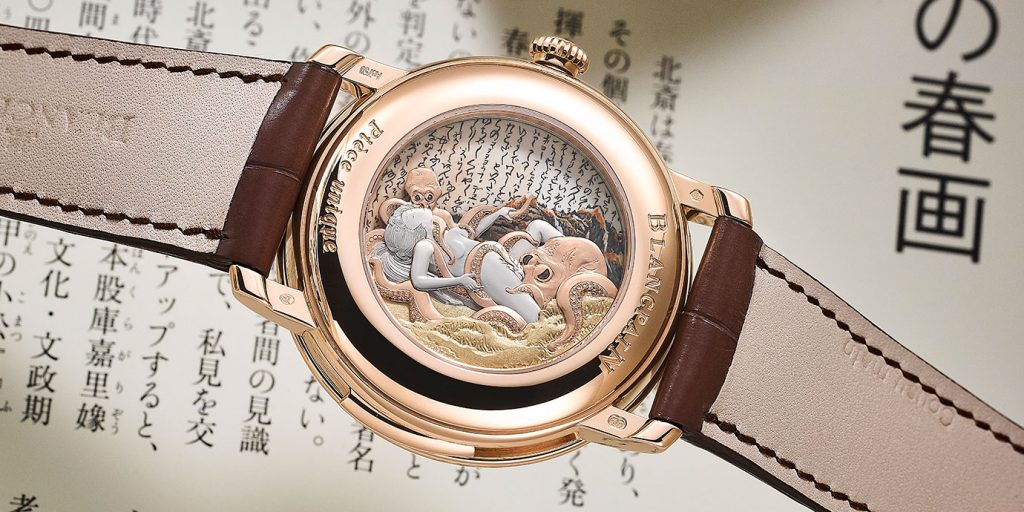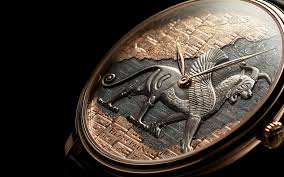Introduction
Blancpain, founded in 1735, stands as one of the oldest and most esteemed names in the world of Swiss watchmaking. Known for its meticulous craftsmanship, innovation, and devotion to mechanical watches, Blancpain has consistently been at the forefront of horology. This article delves into the brand’s history, its evolution through centuries, and how it has shaped the world of luxury watches.
Blancpain’s story is one of timeless tradition and progressive innovation, creating a brand that continues to stand as a beacon of luxury and technical excellence.
Chapter 1: The Founding of Blancpain and Its Early Years (1735-1800s)
1.1 The Vision of Jehan-Jacques Blancpain
Blancpain was founded by Jehan-Jacques Blancpain in the Swiss Jura mountains. In the mid-18th century, Jehan-Jacques began crafting his timepieces in Villeret, a small village known for its watchmaking heritage. Blancpain’s mission from the outset was to create mechanical watches of exceptional quality, combining precision with beauty.
Jehan-Jacques Blancpain’s philosophy centered on creating watches that were both practical and innovative, which led to the development of several early complicated movements. The Blancpain brand began gaining recognition throughout Europe, laying the foundation for what would become an iconic legacy.
1.2 Early Innovations and Market Position
Throughout the 18th and early 19th centuries, Blancpain focused on improving the reliability and precision of its timepieces. In addition to creating standard timepieces, the company introduced some of the era’s first perpetual calendars and chronographs, setting Blancpain apart from other Swiss watchmakers of the time.
By the early 1800s, Blancpain was already an established name in the Swiss watchmaking community, with its timepieces sought after by collectors and aristocrats alike.
Chapter 2: Blancpain’s Golden Age (1800s-1950s)
2.1 The Influence of the Industrial Revolution
The Industrial Revolution in the 19th century profoundly influenced the Swiss watchmaking industry. As the demand for more precise, reliable timepieces grew, so too did the need for mass production and innovative machinery. Blancpain responded to these changes by improving the efficiency of its operations, leading to the development of even more sophisticated movements.
During this period, Blancpain continued its pursuit of high-end mechanical craftsmanship, producing watches that were not only accurate but also aesthetically pleasing. In addition, the brand’s commitment to creating complicated movements allowed Blancpain to maintain its competitive edge in the growing market for luxury watches.
2.2 Iconic Models and Milestones
Blancpain achieved several notable milestones in this era, including the creation of the first self-winding watch. This groundbreaking innovation was a precursor to the modern automatic movement and solidified Blancpain’s reputation as a leader in horological innovation.
As the company grew, Blancpain also diversified its offerings, producing a wide variety of luxury timepieces suited for different occasions and markets. One of the most significant achievements during this period was the development of the Villeret watch collection, named after the brand’s home town. These timepieces combined elegance with technical sophistication, which was a hallmark of Blancpain’s approach.
Chapter 3: The 20th Century – Innovation, War, and Revival (1900s-1980s)
3.1 The Impact of World Wars on Blancpain
Like many other Swiss watchmakers, Blancpain was deeply affected by the two World Wars. During World War I and World War II, the demand for military timepieces soared. Blancpain, though primarily known for luxury watches, adapted to the needs of the times by producing military watches that met the stringent requirements of armed forces.
The most notable development in this period was the creation of the Fifty Fathoms, a pioneering diving watch released in 1953. Designed in collaboration with French Navy divers, the Fifty Fathoms was a watersport-focused timepiece that could withstand extreme depths, making it one of the earliest examples of modern professional diving watches.
The Fifty Fathoms established Blancpain as not only a producer of elegant dress watches but also a key player in the burgeoning world of sport watches.
3.2 The Revival of Blancpain Under the Leadership of Jean-Claude Biver
By the 1980s, Blancpain faced financial difficulties, a result of the quartz crisis, which threatened traditional mechanical watchmaking. In 1982, Jean-Claude Biver, an influential figure in the Swiss watch industry, took control of the brand. Under his leadership, Blancpain was revitalized and reintroduced to the luxury watch market with a renewed focus on traditional mechanical movements.
Biver’s leadership also marked the restoration of Blancpain’s commitment to exclusivity and craftsmanship, launching limited-edition timepieces that attracted the attention of collectors worldwide.

Chapter 4: Blancpain’s Modern Era (1990s-Present)
4.1 The Renaissance of Classic Designs and Technological Innovations
The 1990s and early 2000s saw Blancpain solidify its position as a leading luxury brand in the world of high-end Swiss watchmaking. The company focused on creating timepieces that paid homage to its heritage while integrating cutting-edge technologies.
Blancpain’s complicated watches from this period, such as the Grande Complication and L-evolution series, showcased the brand’s ability to blend traditional craftsmanship with innovative features. These watches featured complicated movements like perpetual calendars, tourbillons, and minute repeaters, continuing the brand’s legacy of technical excellence.
4.2 Blancpain and the Concept of “Traditional Watchmaking”
Blancpain has made a name for itself as a champion of traditional Swiss watchmaking. In an era dominated by quartz and digital watches, Blancpain stayed true to its roots by exclusively producing mechanical timepieces. The company’s decision to maintain this commitment has helped it remain a beacon of heritage, emphasizing craftsmanship, exclusivity, and the beauty of mechanical movements.
In recent years, Blancpain has introduced several limited-edition watches that celebrate the artistry and innovation of handcrafted watchmaking, reinforcing the brand’s position as an icon of luxury.
Chapter 5: The Role of Blancpain in the Watchmaking Community
5.1 Blancpain’s Commitment to Sustainability and Environmental Responsibility
In addition to its commitment to watchmaking excellence, Blancpain has also become known for its dedication to environmental causes. The brand has partnered with various marine conservation initiatives, aligning itself with sustainability efforts. Notably, Blancpain has sponsored the Blancpain Ocean Commitment, a series of partnerships aimed at protecting the world’s oceans and marine life.
By associating itself with environmental conservation, Blancpain positions itself as not only a leader in luxury horology but also as a socially responsible brand committed to making a positive impact on the world.
5.2 Blancpain’s Influence on Watchmaking Culture
Blancpain’s cultural influence extends far beyond its timepieces. The brand has played a critical role in elevating the perception of mechanical watches in the modern era, particularly by emphasizing the art of handcrafting and high-end complications. The brand’s commitment to precision, timeless aesthetics, and quality craftsmanship has helped shape the standards of luxury timepieces worldwide.
Blancpain’s collaborations with artists, designers, and adventurers have further reinforced its position as a luxury icon, blending art with engineering in ways few other watchmakers have.
Conclusion: Blancpain’s Enduring Legacy
Blancpain’s rich history and unwavering commitment to mechanical watchmaking have ensured its place as one of the most prestigious watch brands in the world. From its humble beginnings in Villeret, to becoming a symbol of luxury and innovation, Blancpain has maintained its reputation as a master of precision craftsmanship.
The brand’s dedication to heritage, coupled with a constant drive for innovation, has kept it at the forefront of Swiss horology. Whether it is through diving watches, complicated movements, or eco-conscious initiatives, Blancpain’s legacy continues to thrive, embodying the very best of watchmaking artistry.





































